Hunting Rocky Mountain vs. Roosevelt Elk
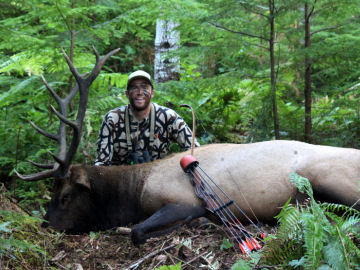
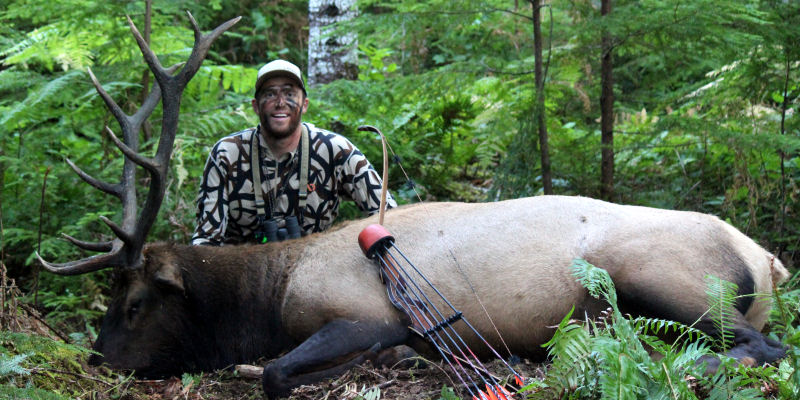
My Grandpa once said, “Elk are exactly where you find ‘em!” This saying has always held a special place in my memory bank, whether I’m chasing bugles in the thick jungle of Western Oregon or in the high mountain peaks of Colorado. In my experience, Rocky Mountain Elk and Roosevelt Elk are very similar in their habits and actions; the main difference in hunting them is the habitat in which they reside.
For the first 15 years of my elk hunting career, I was wading through the waist-deep brush of the Oregon Coast Range pursuing Roosevelt Elk with a bow in my hand. From those early encounters, I’ve been fortunate to expand my boot tracks the last few years in a wide variety of landscapes chasing the bugles of Rocky Mountain Elk. Two obvious differences I’ve observed between the two sub-species is the size of their bodies, and the size of their antlers. Rockys generally top the record book with tremendous scores, but Rosies will fill up bigger freezers with prime steaks! Both species intrigue me to pursue them each September. Ultimately, I believe the biggest difference in hunting the two is the environments where they live.
Rosies
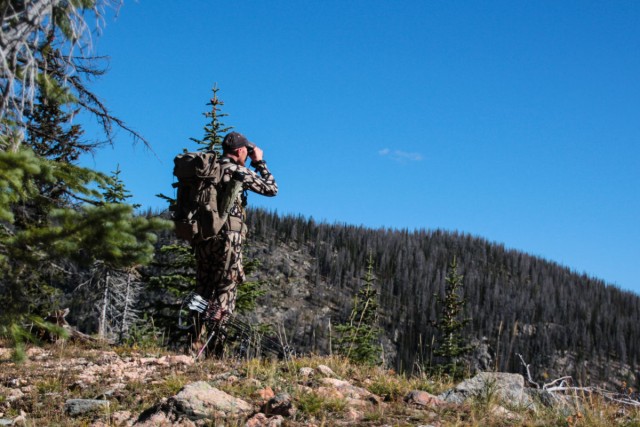 The greatest challenge related to harvesting a Roosevelt bull is the habitat they call home. Much of their habitat is influenced by logging activity, and the logging provides open clearcuts where the elk can often be found. These clearcuts are their feeding grounds, and elk will typically use the clearcuts in the evening and throughout the night, and can often be spotted leaving them at daylight. The thick reprod (Reforested Tree Plantation) where the elk bed during the day, however, can create a physical barrier from accessing their afternoon beds. While this can be a curse, it has also been a blessing on some hunts. The jungle-like terrain can conceal the movements of hunters, enabling an up-close and personal encounter without detection. Unlike Rocky Mountain Elk, Roosevelts typically live within a small home range. They will often seek bedding areas that are within eyesight of their feeding grounds. Their movements are smaller and much less distance is traveled on a daily basis.
The greatest challenge related to harvesting a Roosevelt bull is the habitat they call home. Much of their habitat is influenced by logging activity, and the logging provides open clearcuts where the elk can often be found. These clearcuts are their feeding grounds, and elk will typically use the clearcuts in the evening and throughout the night, and can often be spotted leaving them at daylight. The thick reprod (Reforested Tree Plantation) where the elk bed during the day, however, can create a physical barrier from accessing their afternoon beds. While this can be a curse, it has also been a blessing on some hunts. The jungle-like terrain can conceal the movements of hunters, enabling an up-close and personal encounter without detection. Unlike Rocky Mountain Elk, Roosevelts typically live within a small home range. They will often seek bedding areas that are within eyesight of their feeding grounds. Their movements are smaller and much less distance is traveled on a daily basis.
Once Roosevelt elk leave the clearcuts, I prefer to concentrate my efforts on their bedding grounds. Thick timber patches adjacent to clearcuts or younger reprod is prime bedding habitat. If you are unable to locate them in the morning, shift your efforts to these areas as the day progresses.
Calling to Roosevelt bulls has been a myth amongst the ‘old-timers’. Many people claim Roosevelt bulls simply don’t bugle. My experiences are quite the contrary. A rutting Roosevelt bull may not be as vocal as a Rocky Mountain bull, but in my opinion, they are more territorial and more aggressive! Locating a bugle is the hardest part, as the mountains and thick trees don’t allow the sound to carry very far. Often, the hardest part once you hear a bugle is pinpointing where it came from.
Once located, I am very aggressive with my calling and approach. Oftentimes, I will run right at the bull, simulating a threat from another bull. Typically, with the wind in your favor, you can push the envelope and get within 60 yards or closer without being seen. Most of the time, the bull will counter your attack with a steadfast approach to the threat! Don’t be afraid to break branches on your charge. Simulate the natural sounds a rutting bull makes. Besides the vocalization, I often breathe through my bugle tube to emulate the sounds I’ve heard from approaching bulls. This in-your-face advance can create an adrenaline-filled encounter. As you get close and set up, be sure your final setup allows for a clear shot. Most often, the shots will occur in close quarters, and it’s not uncommon to have shooting lanes that are under 20 yards.
Rockys
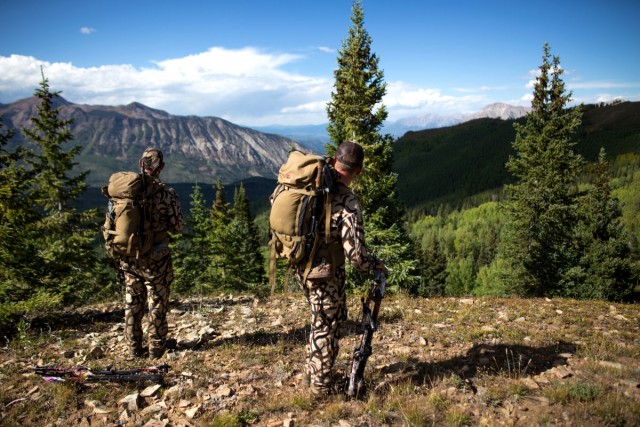 The more popular Rocky Mountain Elk inhabit a much larger geographical region. They can be found as far West as the Cascade Mountains, all the way east to the foothills of Pennsylvania, and just about everywhere in between. My experiences chasing these critters have included Oregon, Idaho, Wyoming, and Colorado. While the terrain varies from state to state, their habits have remained relatively the same.
The more popular Rocky Mountain Elk inhabit a much larger geographical region. They can be found as far West as the Cascade Mountains, all the way east to the foothills of Pennsylvania, and just about everywhere in between. My experiences chasing these critters have included Oregon, Idaho, Wyoming, and Colorado. While the terrain varies from state to state, their habits have remained relatively the same.
Aside from the obvious difference of antler size, they hold fairly similar habits to their cousins of the coast. The striking disparity between the two is the habitat they reside in. The landscape shapes their movement and habits. Typically, Rocky Mountain Elk are found in more open terrain with natural vegetation.
Rockys often feed in open terrain like Rosies, but these can be found in natural areas like meadows or old burns where fresh, green vegetation is found. Once the sun is up, they typically start making their way to higher ground where they spend the afternoon grabbing some ZZZ’s in the thick, cool timber. They use the thermals to their advantage and move up with the descending morning breeze, which makes an approach from above nearly impossible. I’ve witnessed elk make round trip travels as far as 15 miles from their feeding grounds to the bedding areas.
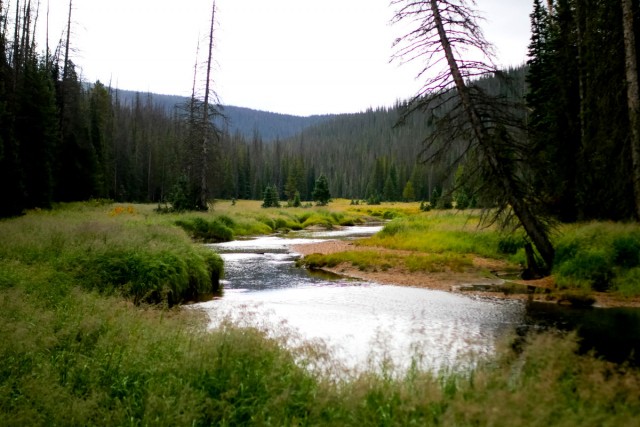 Open terrain lends to a couple different hunting styles to be deployed. Spot and stalk, or herd shadowing, is very popular and successful for many hunters. Though this is not my preferred style, it can be very rewarding while chasing call-shy Rockys.
Open terrain lends to a couple different hunting styles to be deployed. Spot and stalk, or herd shadowing, is very popular and successful for many hunters. Though this is not my preferred style, it can be very rewarding while chasing call-shy Rockys.
My personal, preferred method of hunting Rockys is calling, and I typically engage the same tactics I use for Roosevelts. The vast difference in habitat makes the calling set-up different, but I still like to utilize an aggressive calling tactic. Open terrain doesn’t cover your movements as much as the thick jungle where Roosevelts live, so my approach must be much more calculated and methodical. I use the terrain to conceal my movements and push as close as possible before pushing the bull’s buttons.
While I’ve enjoyed cutting my teeth hunting Roosevelts in the western slopes of Oregon, I believe the lessons I’ve learned hunting in the thick, steep country has expanded my skillset and proved to be deadly while chasing Rocky Mountain elk as well. I highly encourage you to take on a new challenge and set a goal to tackle the unknown, whether you’ve ever killed a Rosie or a Rocky. I believe if you hunt in country that is unfamiliar or out of your comfort zone, in the end, you will increase your skillset and be able to apply it to your next hunt. At the end of your hunt, whether you’ve been successful or not, reflect on the mistakes you’ve made and learn from them.
Remember that elk are exactly where you find them. Sometimes you have to forget that picture-perfect meadow, and roll up your sleeves and dive into the thick brush to chase your dream bull!

